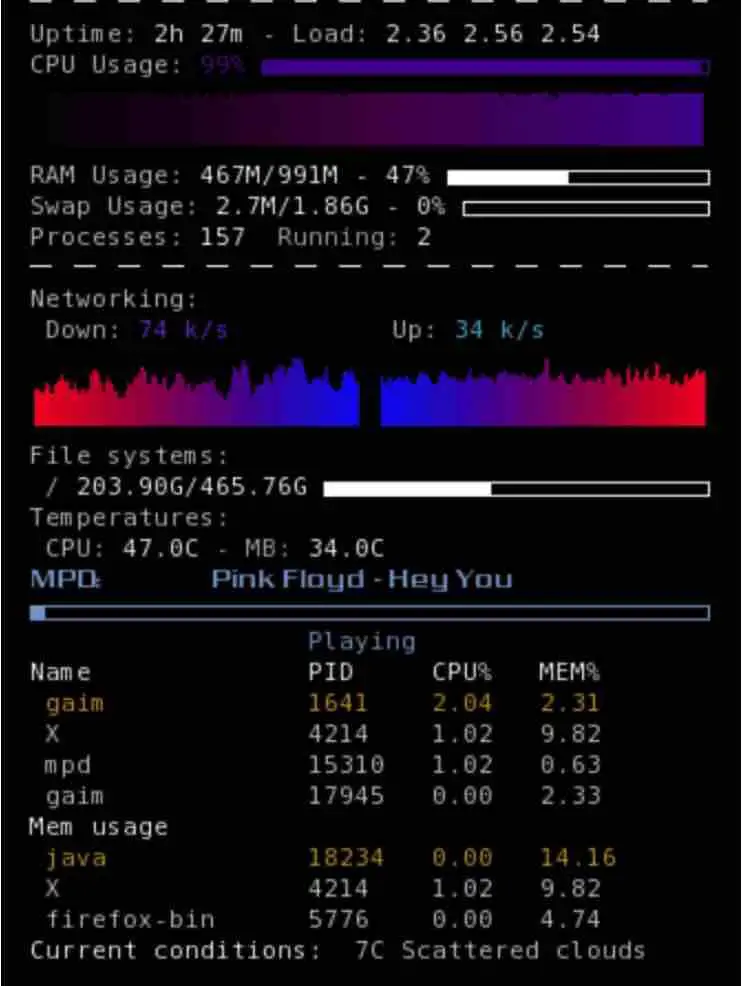

- #UBUNTU TEMP MONITOR HOW TO#
- #UBUNTU TEMP MONITOR INSTALL#
- #UBUNTU TEMP MONITOR DOWNLOAD#
- #UBUNTU TEMP MONITOR FREE#
#UBUNTU TEMP MONITOR DOWNLOAD#
Next, download the most recent stable Psensor (i.e version 1.1.3) source tarball and compile it using following commands.
#UBUNTU TEMP MONITOR INSTALL#
# sudo yum install gcc gtk3-devel GConf2-devel cppcheck libatasmart-devel libcurl-devel json-c-devel libmicrohttpd-devel help2man libnotify-devel libgtop2-devel make Right-click the newly added widget, click preferences, and set interval seconds to 5. Scroll down and Highlight Command (Shows the output of a command), Click Add. I hope to find out CPU temperature in Ubuntu Linux help you to keep your laptop healthy and use it for a longer time.Unfortunately, on RedHat like systems, Psensor isn’t available from the default system repository, and you need to compile it from source as shown below. Right-click taskbar and click +add to panel. Similarly, use the quality thermal paste to fill in the gaps and allow for better transfer of heat from the heat spreader to the heatsink. Once installed, both tools are relatively simple to use lm-sensors. In some extreme cases, you may need to replace a heat sink to keep a hot component such as a processor cool. For Red Hat and CentOS systems you can use: sudo yum install lm-sensors hddtemp.
#UBUNTU TEMP MONITOR FREE#
In conclusion, keep your laptop fan clean and dust free to reduce the temperature.

Make sure your Thinkpad laptop positioned on a flat and hard surface.Buy a good laptop cooler to place your laptop on.Open your laptop and remove (blow out) all the dust from fans and hardware.Related: Linux Monitor Hard Disks Temperature With hddtemp and Linux find NVMe SSD temperature using command line What to do when a laptop gets way too hot

Sudo nvme smart-log /dev/nvme0 | grep temperature temperature : 40 C One can filter output using the grep command: Node SN Model Namespace Usage Format FW Rev Now use the nvme command as follows to get list of all NVMe devices and namespaces on machine:
#UBUNTU TEMP MONITOR HOW TO#
How to monitor Nvme ssd temperature in Ubuntu SMART also warns you if the disk is about to fail, helping you avoid loss of important data. Hard disks have a built-in health-check tool called SMART (Self-Monitoring, Analysis, and Reporting Technology), which continually checks the disk for potential problems. how to check cpu temperature in linux cpu temp monitor ubuntu view cpu temperature. Sample outputs: /dev/sda: Samsung SSD 850 EVO 500G: 32☌ Use disks & storage GUI tool to view hard disk temp Shell/Bash answers related to check cpu temperature ubuntu. How to see hard disk temperature in Ubuntu Install Freon and Sensors extension for Ubuntu Linux desktop: Watch sensors How can I show the CPU temperature in the GNOME panel One can use the watch command command to run sensors command repeatedly, displaying its output on screen: Your LMA stack will help point out issues in load, networking, and other resources before it becomes a failure point.


 0 kommentar(er)
0 kommentar(er)
